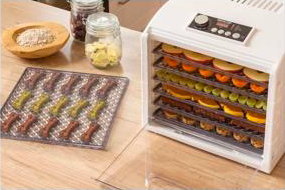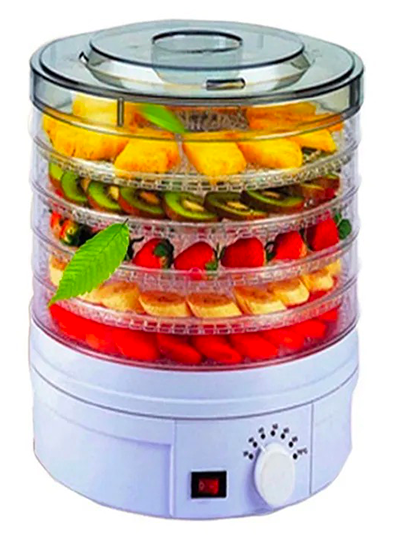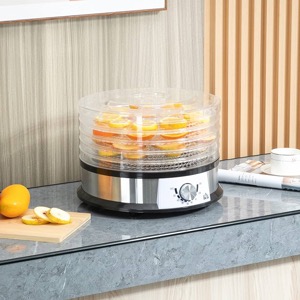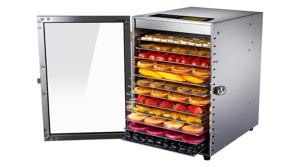
Content Menu
● Understanding Heat Pump Dryers
>> Key Features
● Maintenance Requirements for Heat Pump Dryers
● Understanding Condenser Dryers
>> Key Features
● Maintenance Requirements for Condenser Dryers
● Comparing Maintenance Needs
● Best Practices for Maintenance
● Troubleshooting Common Issues
● Conclusion
● Related Questions
>> 1. What is the main difference between heat pump dryers and condenser dryers?
>> 2. How often should I clean my dryer filters?
>> 3. Can I perform all maintenance tasks myself?
>> 4. What should I do if my dryer is overheating?
>> 5. How can I improve drying efficiency?
When it comes to food drying technology, understanding the maintenance requirements of heat pump and condenser dryers is crucial for ensuring optimal performance and longevity. Both types of dryers have unique features and maintenance needs that can significantly affect their efficiency and effectiveness in food preservation. This article will delve into the specifics of each type, offering insights into their operation, maintenance, and the best practices to keep them running smoothly.

Understanding Heat Pump Dryers
Heat pump dryers are known for their energy efficiency. They work by using a refrigeration cycle to dry clothes or food without venting hot air outside. Instead, they recycle the air within the dryer, extracting moisture and condensing it into water, which is then drained away. This method not only saves energy but also reduces wear and tear on the appliance.
Key Features
- Energy Efficiency: Heat pump dryers consume less electricity compared to traditional dryers, making them cost-effective in the long run.
- Ventless Operation: They do not require external venting, allowing for flexible installation options.
- Gentler on Fabrics: The lower drying temperatures are less harsh on food items, preserving flavor and nutrients better than higher heat methods.
Maintenance Requirements for Heat Pump Dryers
To maintain a heat pump dryer effectively, consider the following maintenance tasks:
- Regular Cleaning of Filters: The lint filter should be cleaned after every use to prevent lint buildup, which can hinder airflow and efficiency. Additionally, a microfilter may need cleaning every few months.
- Cleaning the Heat Exchanger: The heat exchanger is critical for maintaining drying efficiency. It should be cleaned regularly to remove any lint or debris that could obstruct airflow.
- Checking Water Drainage: Ensure that the drainage system is clear and functioning correctly to prevent water accumulation within the unit.
- Inspecting Seals and Gaskets: Regularly check door seals and gaskets for wear and tear to maintain an airtight environment within the dryer.
- Periodic Professional Servicing: While many maintenance tasks can be performed by users, scheduling periodic professional servicing can help identify potential issues before they become significant problems.

Understanding Condenser Dryers
Condenser dryers operate similarly to heat pump dryers but do not recycle air in the same way. Instead, they use a heating element to warm air that passes through the drum, absorbing moisture from the clothes or food items. The moist air is then passed through a condenser where it cools down and condenses into water.
Key Features
- Direct Venting Not Required: Like heat pump dryers, condenser dryers do not need an external vent, making them suitable for various installations.
- Faster Drying Times: They generally provide quicker drying times compared to heat pump models due to higher operating temperatures.
Maintenance Requirements for Condenser Dryers
Maintaining a condenser dryer involves several key tasks:
- Cleaning Lint Filters: Similar to heat pump dryers, lint filters must be emptied after each use to ensure efficient operation.
- Cleaning the Condenser Unit: The condenser unit should be cleaned regularly to prevent lint buildup that can affect performance. This process typically involves removing the condenser from its housing and rinsing it under running water.
- Checking Water Collection Tank: If your condenser dryer has a water collection tank, ensure it is emptied regularly to avoid overflow issues.
- Inspecting Hoses and Connections: Regularly check all hoses and connections for leaks or blockages that could impede performance.
- Monitoring Temperature Settings: Ensure that temperature settings are appropriate for the materials being dried. Using excessively high temperatures can lead to damage over time.
Comparing Maintenance Needs
| Feature | Heat Pump Dryer | Condenser Dryer |
| Energy Efficiency | High | Moderate |
| Ventilation Requirement | None | None |
| Filter Cleaning Frequency | After every use | After every use |
| Condenser Cleaning | Regularly (monthly) | Regularly (monthly) |
| Water Drainage | Check drainage system regularly | Empty water collection tank |
| Temperature Control | Lower temperatures | Higher temperatures |
Best Practices for Maintenance
To ensure both types of dryers operate efficiently:
- Establish a Cleaning Schedule: Create a routine that includes cleaning filters after each use and performing deeper cleans monthly or quarterly based on usage frequency.
- Use Appropriate Cleaning Products: When cleaning components like the drum or exterior surfaces, use mild detergents or vinegar solutions to avoid damaging finishes.
- Monitor Performance: Keep an eye on drying times; if they increase significantly, it may indicate a need for maintenance or servicing.
- Educate Users on Proper Loading Techniques: Overloading either type of dryer can lead to inefficient drying and increased wear on components. Educating users about proper loading techniques can enhance performance.
Troubleshooting Common Issues
Even with regular maintenance, you may encounter some issues with your food dryer. Here are some common problems and their solutions:
1. Drying Takes Too Long:
- Check if filters are clogged.
- Inspect the condenser or heat exchanger for lint buildup.
- Ensure proper airflow around the dryer.
- Verify that items are not overloaded in the drum.
2. Unpleasant Odors:
- Clean the drum with vinegar or mild detergent.
- Check for any food residue inside the unit.
- Ensure that drainage systems are functioning properly to prevent stagnant water accumulation.
3. Water Leakage:
- Inspect hoses for blockages or cracks.
- Ensure drainage systems are clear and functioning properly.
- Check seals around doors; worn seals can lead to leaks.
4. Overheating:
- Clean filters regularly.
- Ensure vents are not obstructed if applicable.
- Monitor temperature settings; excessive heat can damage components over time.
5. Inconsistent Drying:
- Check if items are overloaded in the dryer.
- Ensure sensors are clean and functioning properly.
- Verify that both filters and condensers are clean; buildup can impact performance.
Conclusion
Maintaining your food dryer—whether it's a heat pump or condenser model—is essential for ensuring its longevity and efficiency. By following these maintenance tips and practices, you can enhance your appliance's performance while preserving your food effectively. Regular inspections and cleaning will help prevent common issues and keep your food dryer running smoothly for years to come.

Related Questions
1. What is the main difference between heat pump dryers and condenser dryers?
Heat pump dryers recycle air within the unit using a refrigeration cycle, making them more energy-efficient and gentler on fabrics. In contrast, condenser dryers use heated air that passes through the drum but do not recycle it as efficiently as heat pump models.
2. How often should I clean my dryer filters?
It is recommended to clean your dryer filters after every use to maintain optimal airflow and efficiency in both heat pump and condenser dryers.
3. Can I perform all maintenance tasks myself?
While many maintenance tasks can be done by users—such as cleaning filters and checking drainage systems—it's advisable to schedule periodic professional servicing for thorough inspections and repairs if necessary.
4. What should I do if my dryer is overheating?
If your dryer is overheating, first check if filters are clean and vents are unobstructed. If problems persist, consider consulting a professional technician as there may be underlying issues with heating elements or sensors.
5. How can I improve drying efficiency?
To improve drying efficiency, avoid overloading your dryer, clean filters regularly, ensure proper airflow around the unit, and monitor temperature settings based on the materials being dried.












